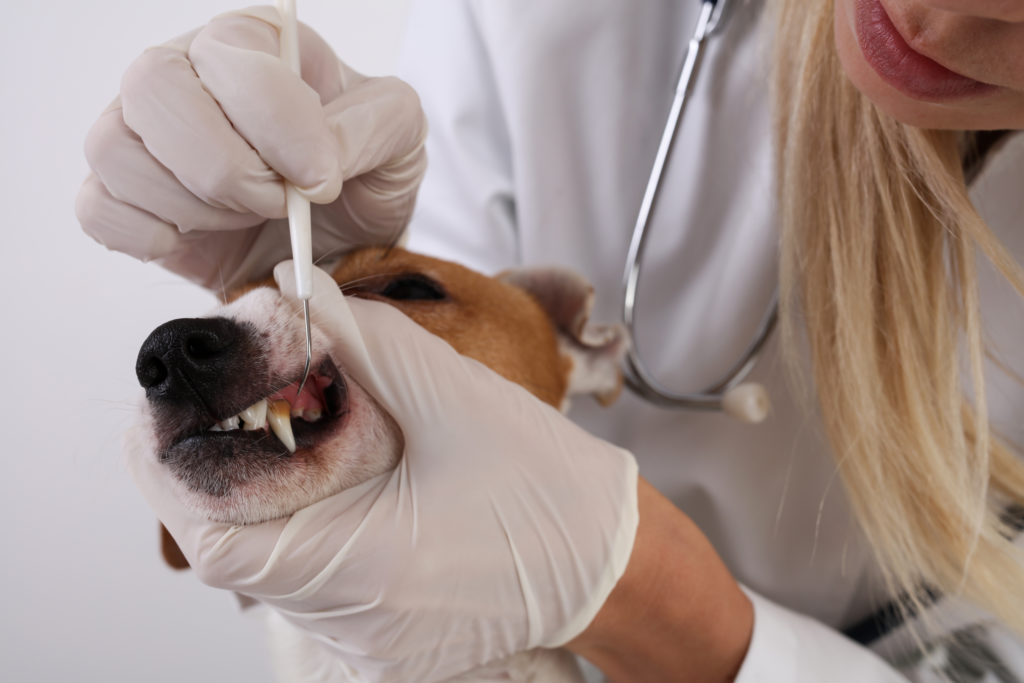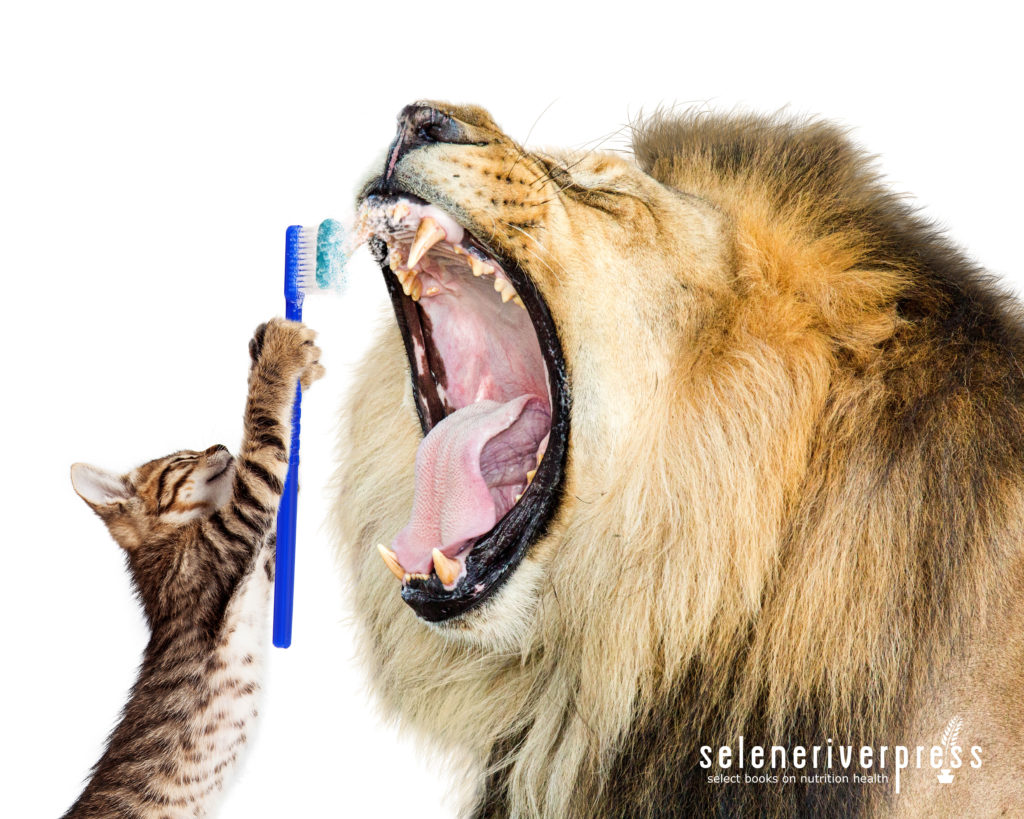When should you arrange a dental checkup for your dog or cat? Some things to watch out for are bad breath, not eating, drooling, licking, just not feeling good. However, not all bad breath stems from dirty teeth. If your dog’s teeth don’t look dirty, we need to consider digestion.
Your veterinarian will be able to determine if the bad breath is coming from the mouth or the digestive tract. The most common cause of bad breath in dogs and cats is bad oral hygiene, which, over time, can lead to periodontal disease. Too much plaque and tartar build-up can push the gums away from the teeth, exposing new areas for bacteria to develop. At this point your veterinarian may recommend that you have your pet’s teeth cleaned.
Periodontal issues are the number-one diagnosed medical problem in small animal veterinary patients. By the age of two, 80 percent of dogs and 70 percent of cats are affected with some form of periodontal issues. Sadly, 30 percent of small dogs have bone loss by one year of age, according to the Academy of Veterinary Dentistry, Western Veterinary Conference 2010. Chances are that you’ll be faced with scheduling a dental appointment at some point in your pet’s life, so let’s talk about what you should expect.
First, keep in mind that clinics and veterinarians all have their own protocols. From my own experience as a veterinary technician, bloodwork is a common predental procedure. To make sure you pet is healthy enough for anesthesia, your veterinarian will most likely ask for a chemistry panel as well as a complete blood count (or CBC), which provides information about blood cells and platelets. Decreased counts of certain blood cells can indicate anemia, bleeding, or even bone marrow or immune system disorders. High counts of certain blood cells can indicate dehydration, inflammation, or infection. The chemistry panel is used to determine liver and kidney function.
Once a physical exam and bloodwork confirm that your pet is healthy enough to undergo the dental procedure, your vet will require you to “NPO” your dog the night before, usually starting at midnight. NPO stands for “nil per os,” or nothing by mouth. Unless your veterinarian does anesthesia-free dentistry, animals are put under general anesthesia. This means they will be intubated with an endotracheal tube down their trachea to help them sleep during the dental procedure.
To relax your pet, many vets will administer a mild sedative (called a preanesthetic) about a half an hour prior to the dental. This makes them easier to handle and prep for the dentistry. Acepromazine is commonly used, but there are many different drugs or combinations of drugs. To provide immediate access to the vein for administering drugs and/or fluids, a small area will be shaved on your pet’s front leg for an intravenous catheter (IVC). This is a vital safety precaution for every anesthetized patient. Additional fluids help maintain blood pressure during surgery. They also aid in flushing the anesthetic from the liver and kidneys, assist in a smoother and more rapid recovery, maintain vitals, and keep your pet hydrated.
Body temperature drops during anesthesia. Therefore, your pet will be kept nice and warm with blankets that recirculate warm water, or with a forced-air warming blanket. Qualified staff will monitor heart rate, blood pressure, blood oxygen, breathing, and IV fluids the during the entire dental procedure.
This is a great time to request any additional services from your veterinarian and/or technician, such as cleaning your pet’s ears, removing warts, clipping toenails, and expressing anal glands, to name a few.
Now that your pet is prepped and sleeping well, the dentistry can begin. A full exam of the teeth, gums, and oral cavity will be done, after the technician removes any large chucks of tartar (also called dental calculus). X-rays may be needed to identify pockets, loose teeth, broken teeth, and abscesses.
Once these problems have been addressed, plaque is removed from the teeth both above and below using an ultrasonic scaler. Removing the plaque under the gum line is an important step in preventing ongoing disease. If left under the gum line, it puts the teeth at serious risk for infection.
Once all plaque and tartar are removed, the mouth is rinsed and all tooth surfaces are carefully polished. If the teeth are not polished, small etchings left on the teeth from cleaning can attract more plaque and tartar to adhere in the small grooves.
After polishing, the mouth is rinsed again and a fluoride treatment might be applied. A cleaning with no extractions takes roughly 45 minutes to an hour. Don’t be alarmed if your dog needs multiple extractions. Animals do very well with a small number of teeth, or even no teeth at all. But if you aren’t already feeding your pet soft, wet food, it will obviously require a diet change.
After the dentistry your pet will be removed from the anesthetic machine to breath room air until the trachtube can be removed. An antibiotic injection is usually administered. For the remaining time in the animal hospital, pets are placed in a comfortable cage as they recover from the anesthesia and continue to be monitored by technicians. In most situations your pet will go home the same day. The severity of the procedure will determine if the patient will need pain relievers or additional antibiotics.
Your veterinarian may recommend a Standard Process supplement called VF Bio-Dent. Formulated specifically for dental patients, this whole food supplement supports growth and repair of bone, teeth, gums, and related structures. The ingredients, which include cold-processed raw veal bone and manganese phosphate (critical for connective tissue healing), provide amino acids, bone nutrients, and raw materials for fibrocartilaginous structures, as well as calcium and phosphorus. This is cell food for oral structures and helps the mouth to take better care of itself—it’s inexpensive and important supplement to consider. And remember, don’t forget to brush.
Images from iStock/adogslifephoto (main), ChesiireCat (post).


